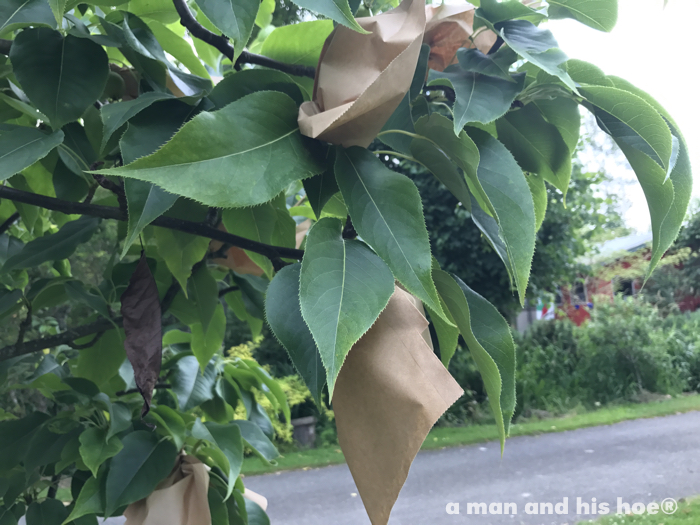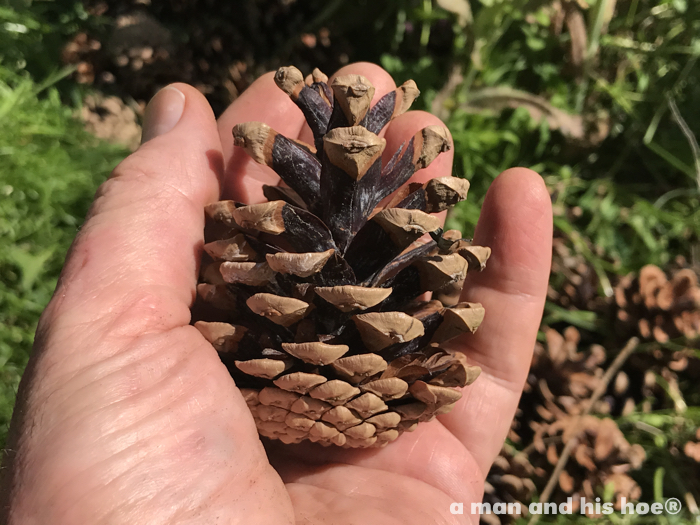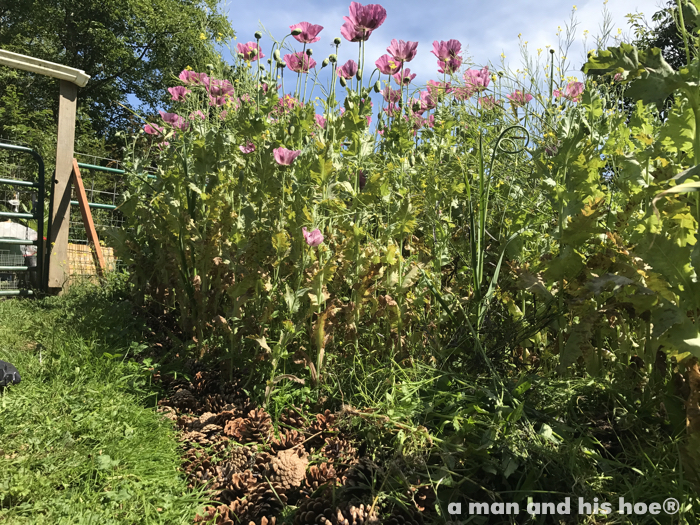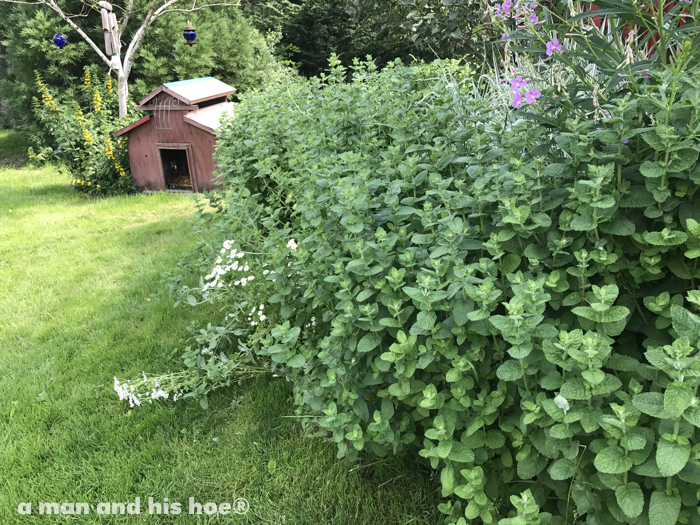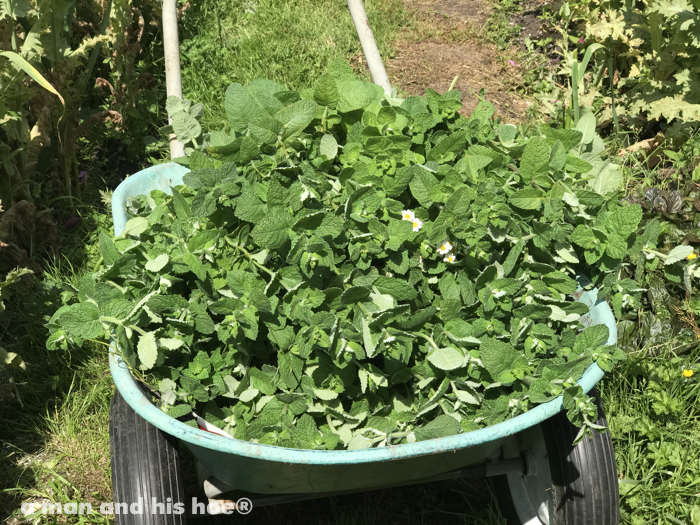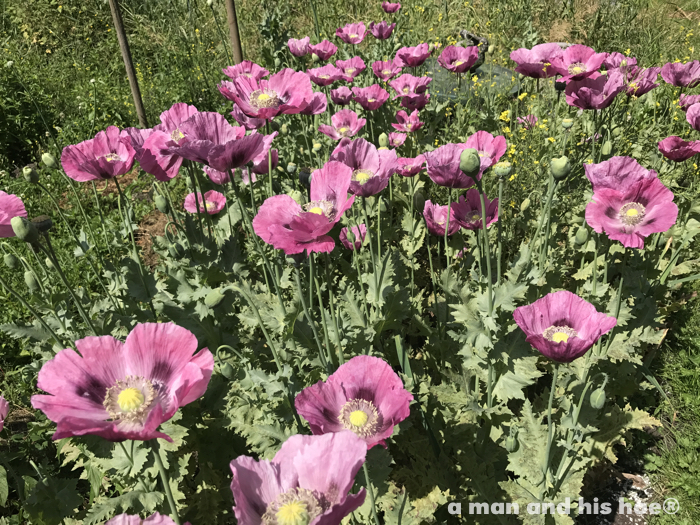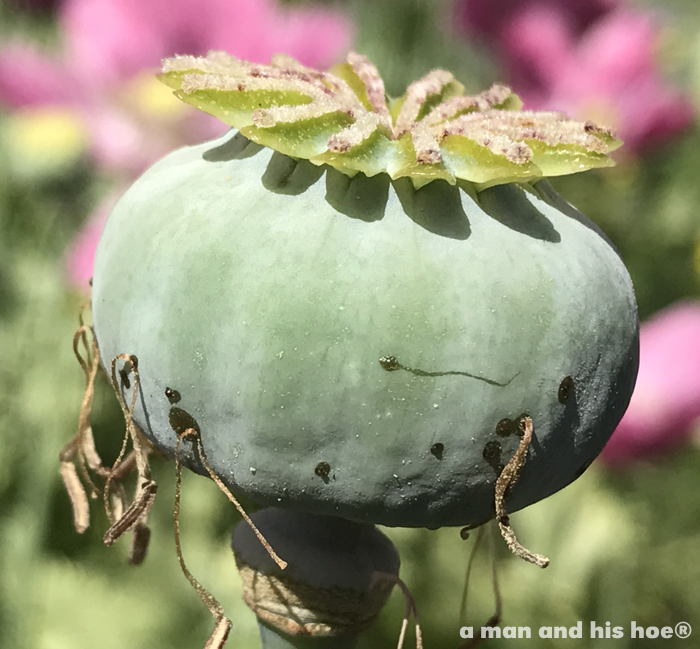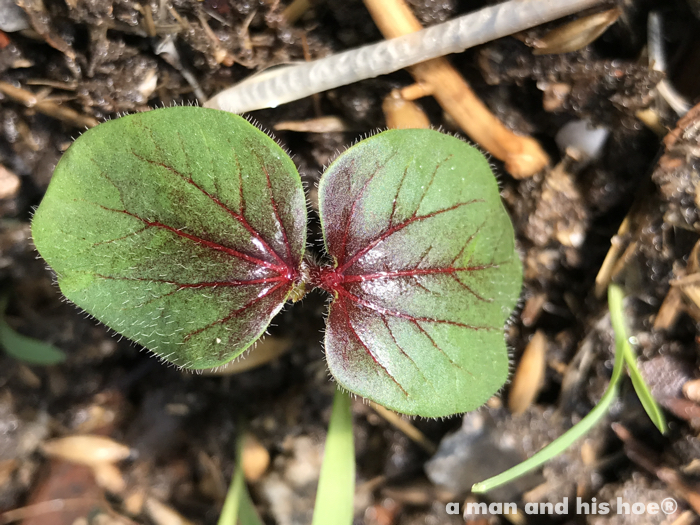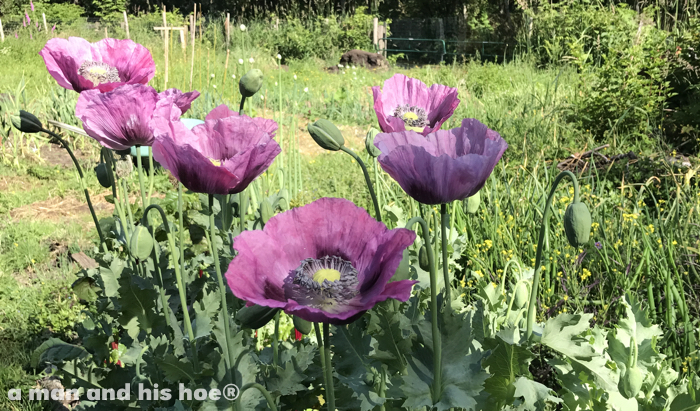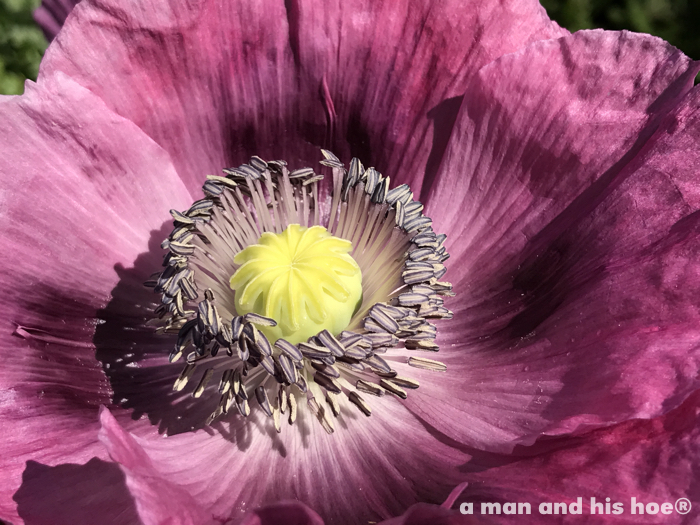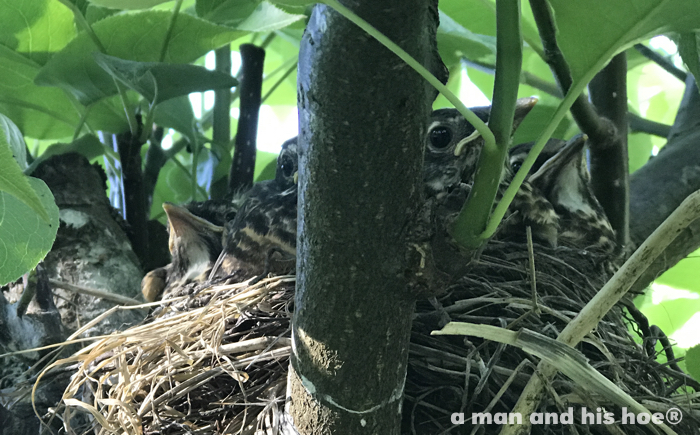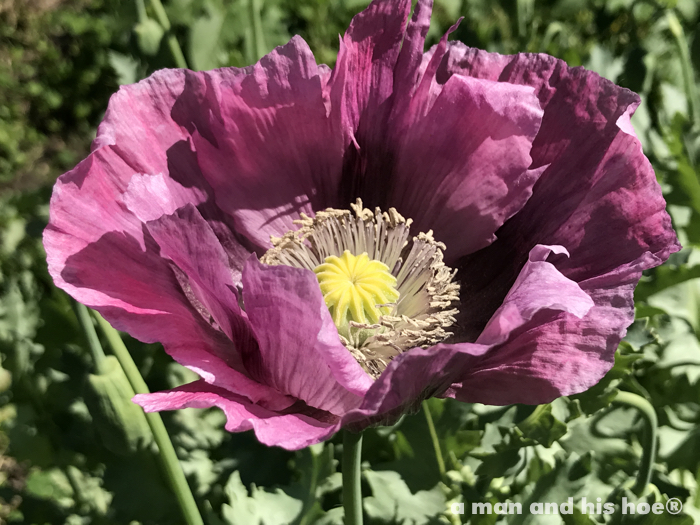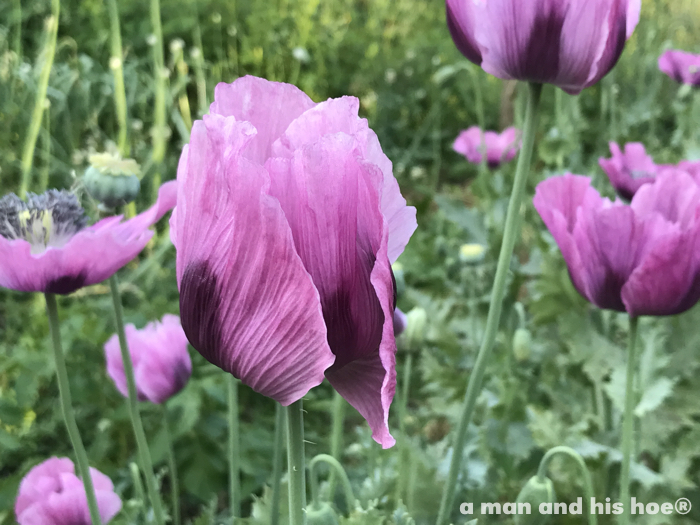
So when do poppies wake up? At the crack of dawn? At a reasonable hour? Wouldn’t you know, just like people, some are early risers, and others like to sleep in. At 6:40 this morning I went out into the garden to get an answer to the nagging question. Some of the poppies were wide awake and ready to go. Others were still fast asleep, and others starting to stir. So when do poppies wake up? It depends on the poppy.
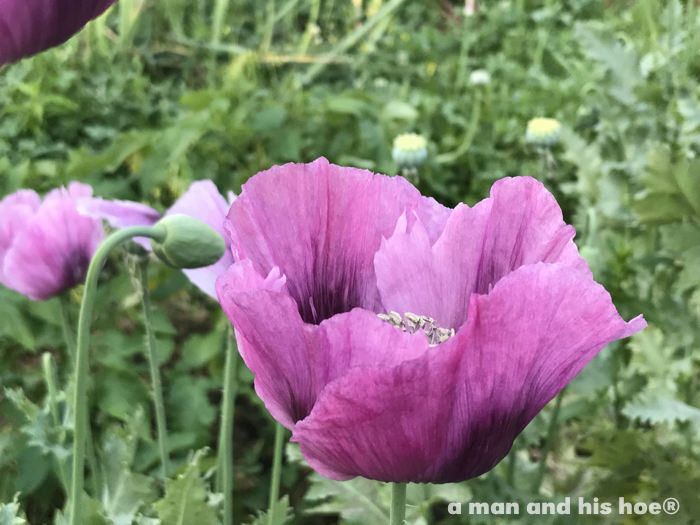
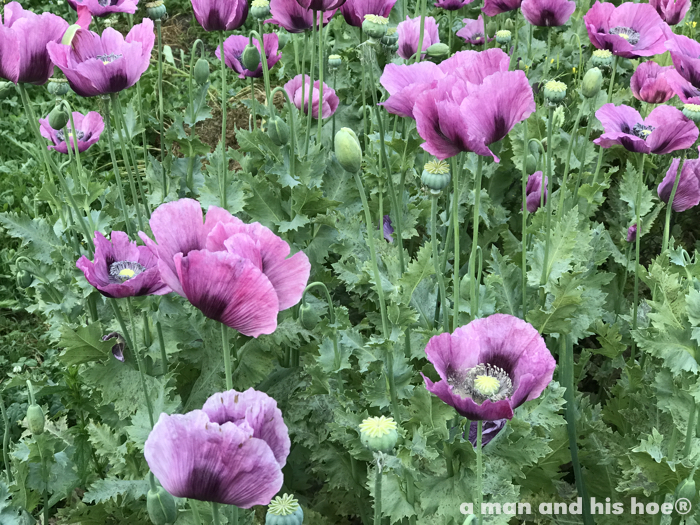
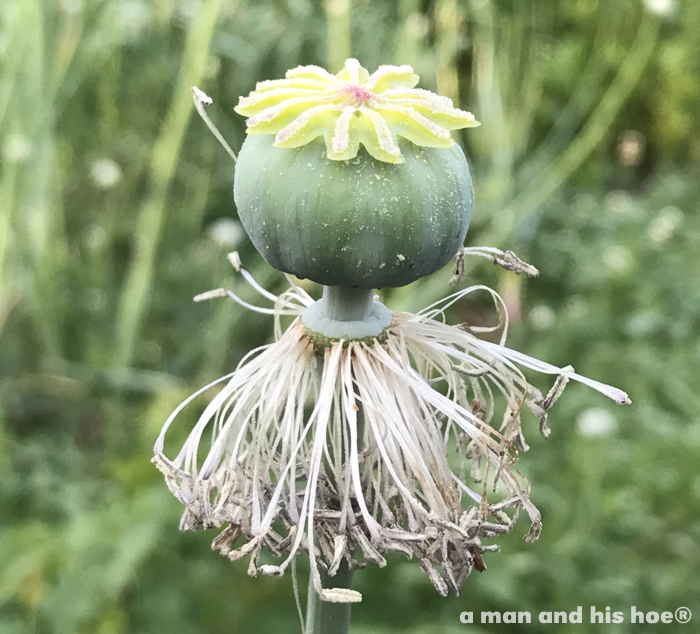
And some poppies have rushed through the whole flowering thing are merrily into the being pregnant thing. There is no one way to do things in nature. It’s every poppy to itself.
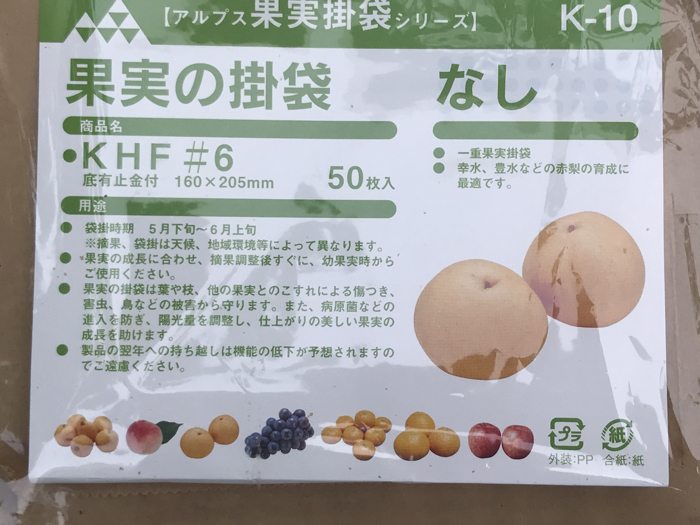
And what do we have here? These are fruit ripening bags specifically for Kosui and Hosui, reddish varieties of nashi or Asian pears. The way they work is that you place the bags over developing fruit and the bags do the following marvelous things:
- Protect the developing fruit from damage caused by leaves, branches, and other fruit rubbing against it
- Protect the developing fruit from birds and insects
- Protect the developing fruit from disease causing bacteria and fungi
- Regulate the amount of sunlight the fruit get so that you get beautiful fruit
The bags sound indispensable. I bagged about half of the developing fruit on our nashi tree and will see if they are indeed as marvelous as they claim to be. The bags have a built in twist tie making it easy to fasten around the stem.
Like any product it comes with plenty of warnings, such as don’t let small children put them in their mouths, don’t stab yourself with the metal twist ties, the bags are flammable so keep them away from flames, you know, all the things we are all tempted to do with new products.
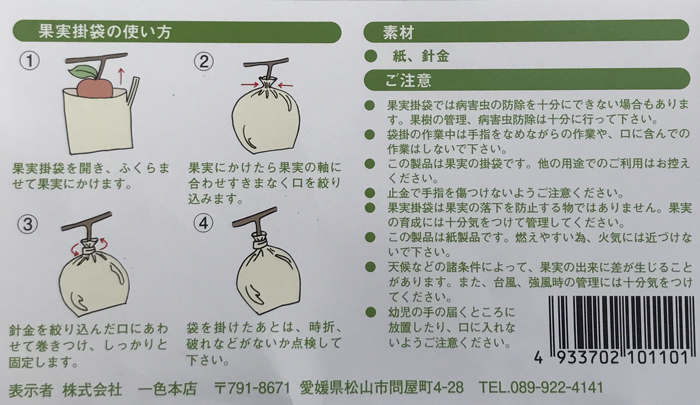
There are fruit specific bags for various apples, peaches, grapes, tangerines, and on and on. And not surprisingly the label asks the user to refrain from keeping bags you buy this year to use on next year’s crop as the efficiency of the bags diminishes over time.

